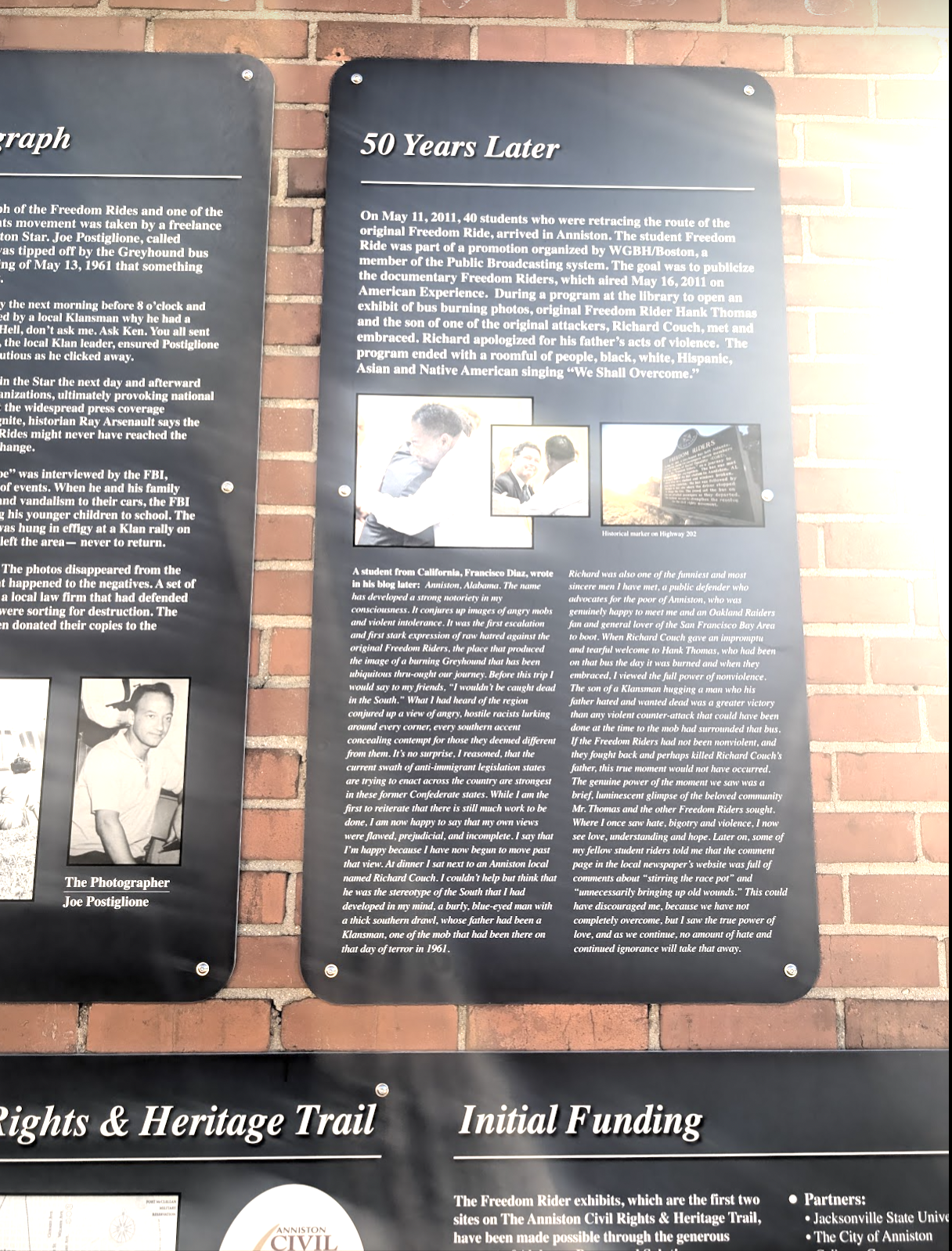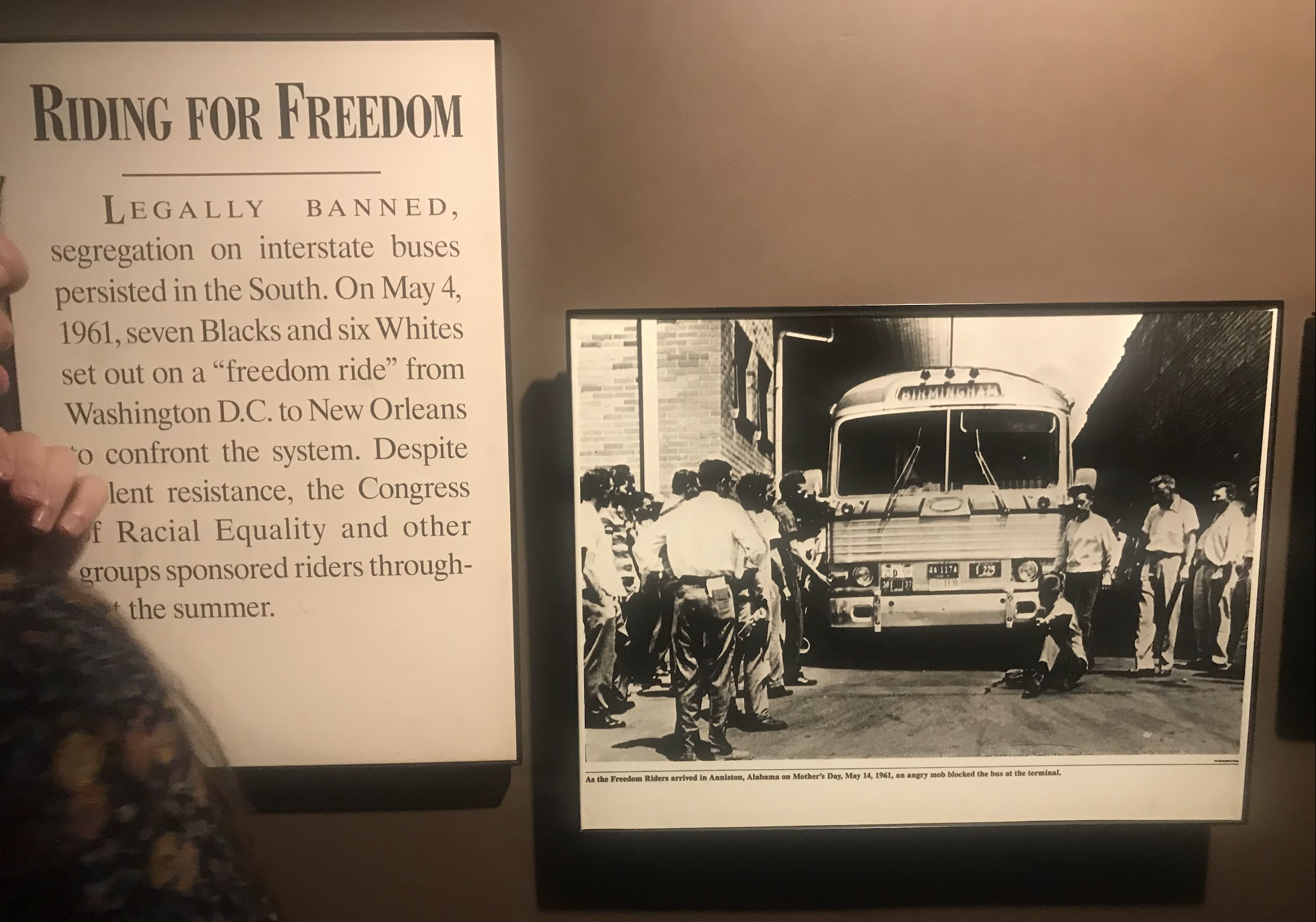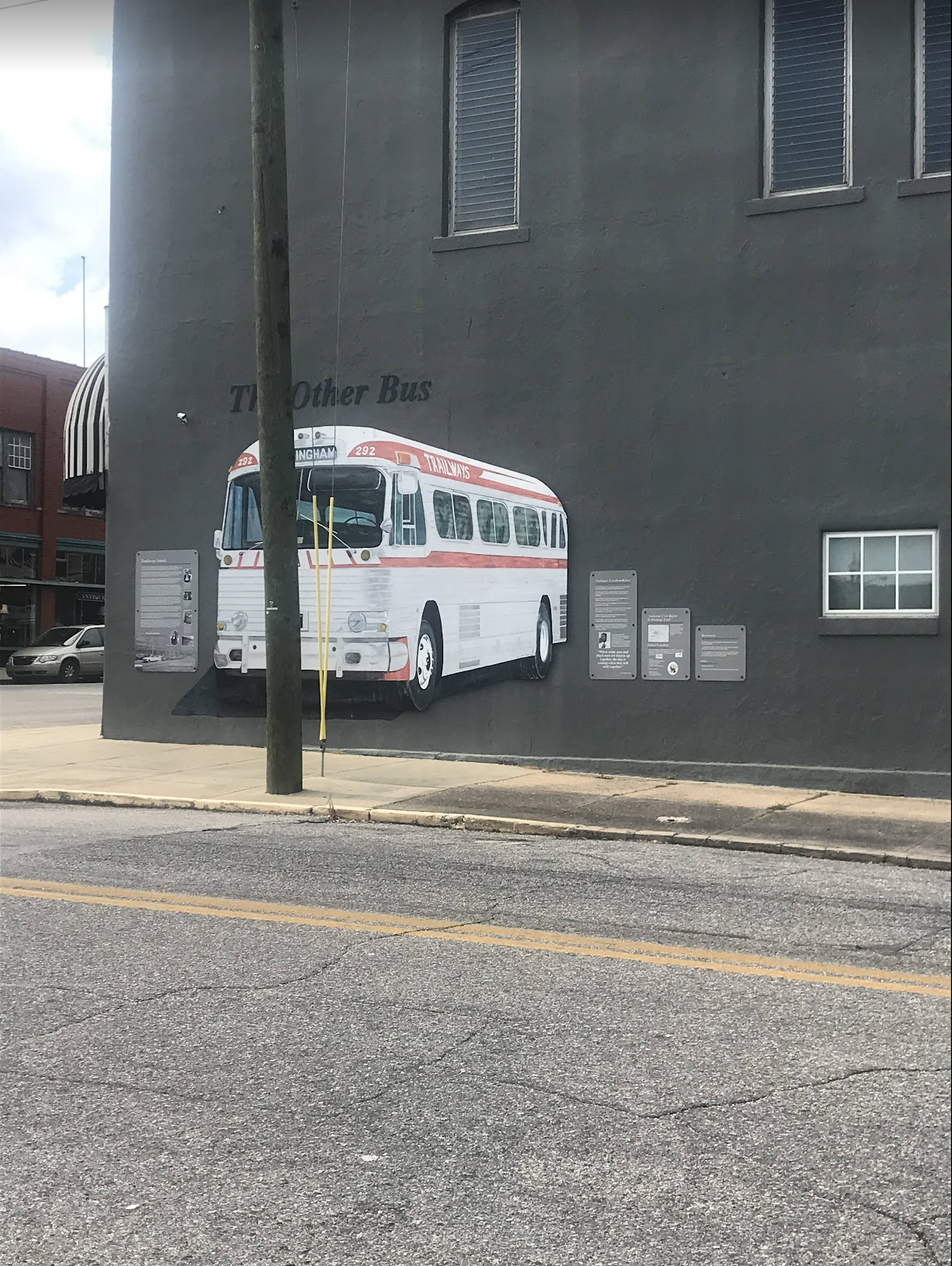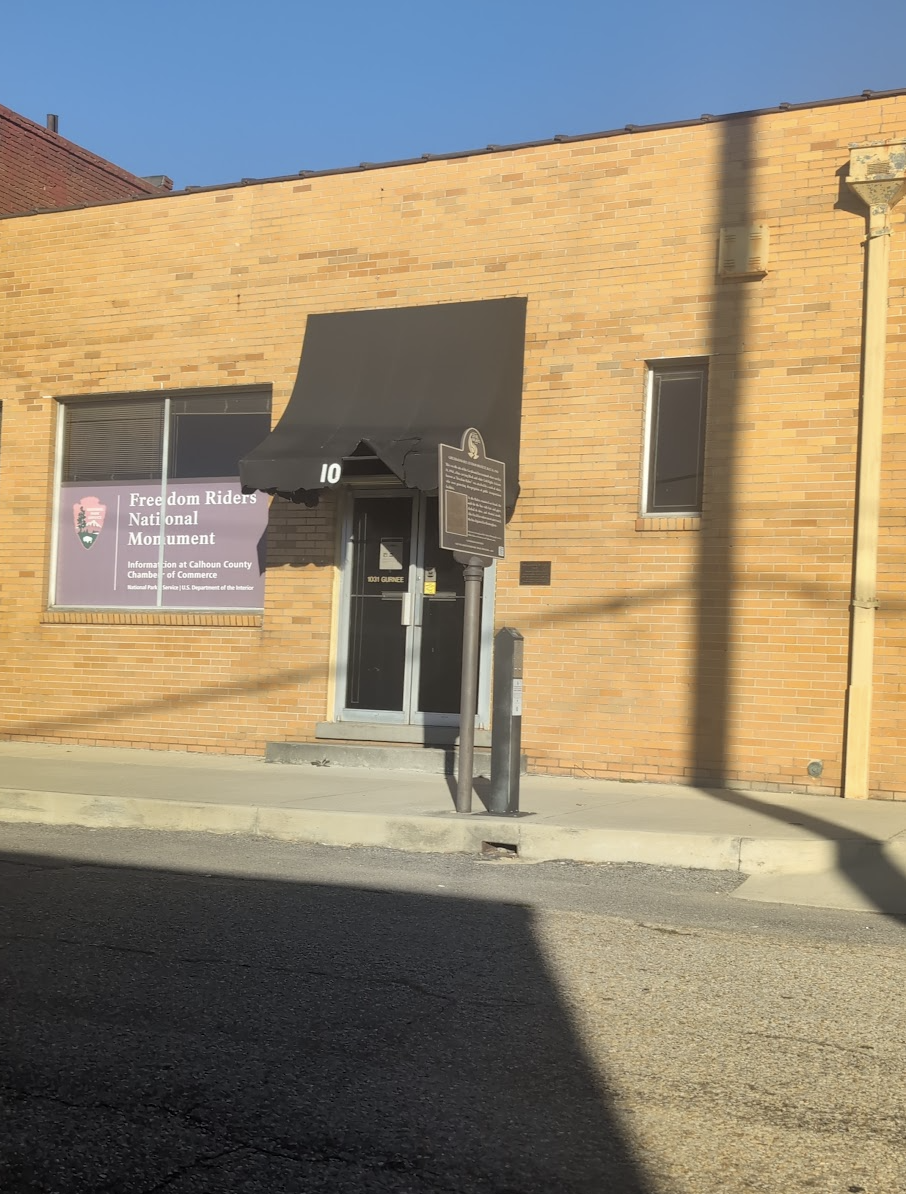The Legacy of the Freedom Riders: Courage, Faith, and a Fight for Justice
October 24th, we kick off 100 days to Black History Month where I will be highlighting amazing stories of Black history throughout the U.S. and the world. Today we start at home, where I live, and where this infamous event happened. Check out this podcast episode!
Join me as we’re diving into the courageous story of the Freedom Riders—an iconic group of activists who challenged segregation in the 1960s. This movement, rooted in faith and justice, inspired a generation of civil rights leaders and still resonates deeply with us today. Their story is one of bravery, determination, and the power of unity in the face of oppression.
The Freedom Riders: A Bold Stand Against Injustice
In 1961, the Freedom Riders, a group of interracial activists, set out on a journey that would shake the foundations of segregation in the southern United States. Organized by the Congress of Racial Equality (CORE) and inspired by Dr. Martin Luther King Jr.'s nonviolent approach, they aimed to desegregate bus terminals and challenge the “separate but equal” policies that were deeply ingrained in the South.
Their mission was simple but dangerous: travel by bus through the segregated South to test compliance with two Supreme Court rulings that declared segregation in interstate bus travel unconstitutional. Their journey began in Washington, D.C., and would take them through several Southern states, with planned stops in cities like Anniston, Birmingham, Montgomery, and Jackson. However, what they encountered along the way was far from peaceful.
The Stop in Anniston: A Turning Point
One of the most violent confrontations occurred in Anniston, Alabama, a city that became infamous for its brutal treatment of the Freedom Riders. On May 14, 1961, the first of two buses carrying the riders was firebombed just outside of Anniston by a mob of Ku Klux Klan members. Trapped inside, the riders were attacked with bricks and clubs, barely escaping with their lives when the bus’s tires were slashed and it was set ablaze.
Reverend Nimrod Reynolds, pastor of St. John United Methodist Church in Anniston, and others like Reverend McClain from nearby churches, played crucial roles in helping the Freedom Riders after the attack. Their courage to offer sanctuary and spiritual support in the face of such violence is a testament to the pivotal role faith communities played during the civil rights movement. These leaders helped preserve hope amidst chaos and provided much-needed shelter, despite the imminent threats from those opposing desegregation.
Beyond the Burning Bus: The Aftermath and Legacy
This harrowing event is captured in the book Beyond the Burning Bus by Phil Noble, a powerful account that explores the aftermath of the attack in Anniston. Noble, who witnessed the events, details how the riders and the movement pressed on, refusing to be silenced by fear or violence. The book also highlights the role of local pastors, such as Reynolds and McClain, whose leadership became instrumental in supporting civil rights activists.
Beyond the Burning Bus not only tells the story of that fateful day but also delves into the broader impact of the Freedom Riders' bravery on the civil rights movement. It's an essential read for anyone who wants to understand the spiritual and communal support that helped carry the movement forward.
Civil Rights Museums: Honoring the Freedom Riders
Today, the legacy of the Freedom Riders is preserved and honored in several civil rights museums across the country. If you want to explore their story further, here are some key places to visit:
The Birmingham Civil Rights Institute (Birmingham, Alabama): This museum features a powerful exhibit with the front of a Greyhound bus, symbolizing the Freedom Riders' journey. The exhibit brings to life the challenges they faced and the violence they endured on their mission to desegregate the South.
The National Civil Rights Museum (Memphis, Tennessee): Another pivotal museum that highlights the civil rights movement, including the courage of the Freedom Riders. Through photos, oral histories, and interactive displays, visitors can step back in time and learn about their bold stand.
The National Museum of African American History and Culture (Washington, D.C.): Located in the nation's capital, this Smithsonian museum offers comprehensive exhibits on the Freedom Riders and other key moments in civil rights history. Visitors can engage with artifacts, including information on their historic journey through the South.
Freedom Rides Museum (Montgomery, Alabama): This lesser-known museum is located in the Greyhound Bus station where the Freedom Riders were viciously attacked in Montgomery. It offers a deeply personal look into their struggle and sacrifice.
These museums serve as a testament to the bravery of the Freedom Riders and the ongoing fight for justice. Their stories continue to inspire new generations of activists.
A Call to Action: Learning from the Past, Shaping the Future
As we reflect on the legacy of the Freedom Riders, their courage serves as a reminder that faith and community can fuel change. In a world where racial inequality persists, it’s essential that we continue to honor their memory by pushing for justice and equality in our own communities.
By reading Beyond the Burning Bus, visiting the museums that preserve this history, and sharing these stories with others, we keep the spirit of the Freedom Riders alive. Let their bravery inspire us to confront injustice, not with fear but with unity, perseverance, and faith.
We can all learn from the strength and determination of these heroes. Let’s carry their legacy forward, and may their actions guide us toward a more just and equitable future.
Call to Action: Get your copy of Beyond the Burning Bus by Phil Noble and learn more about the incredible bravery of the Freedom Riders and the role of local pastors like Reynolds and McClain. And if you ever find yourself in Alabama or D.C., make sure to visit the civil rights museums that pay tribute to this powerful chapter in American history.
Together, we can honor the past and continue the work they began by standing up for justice in our communities today.
Youtube video for Day 1


















